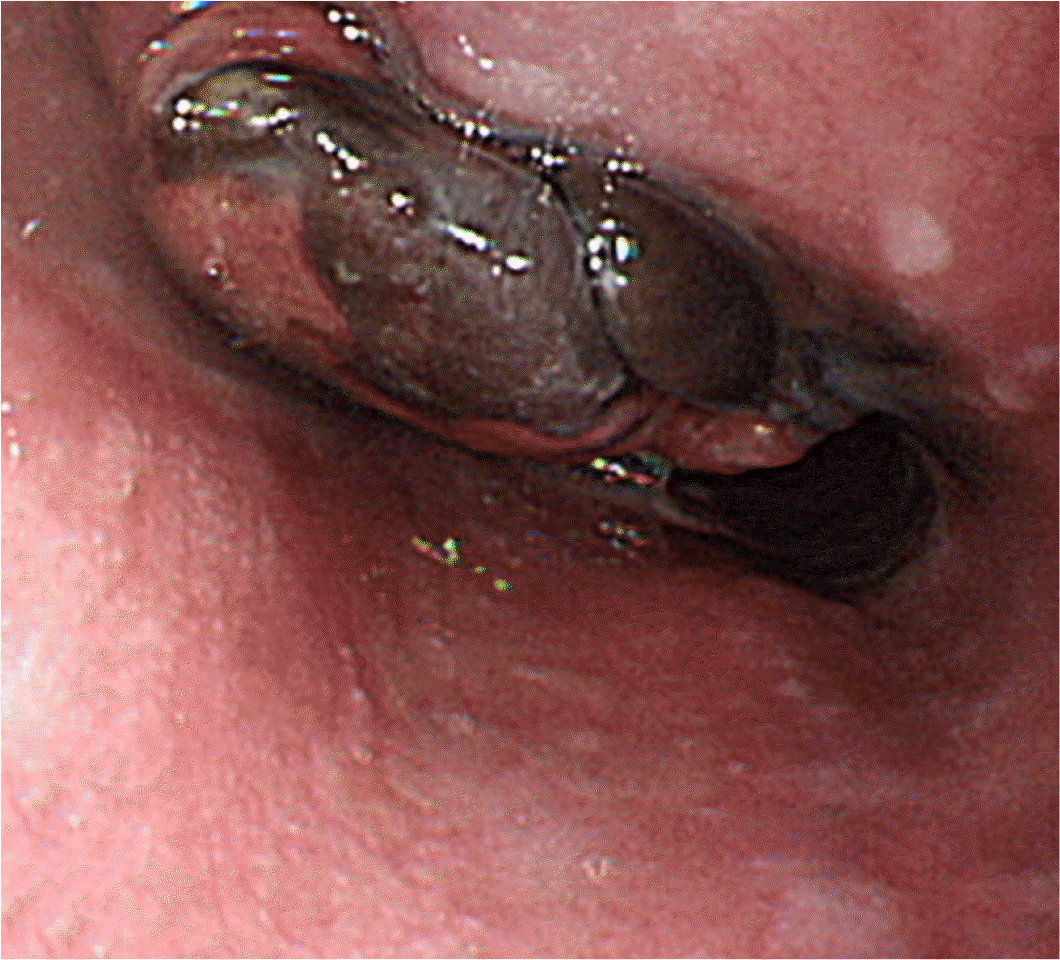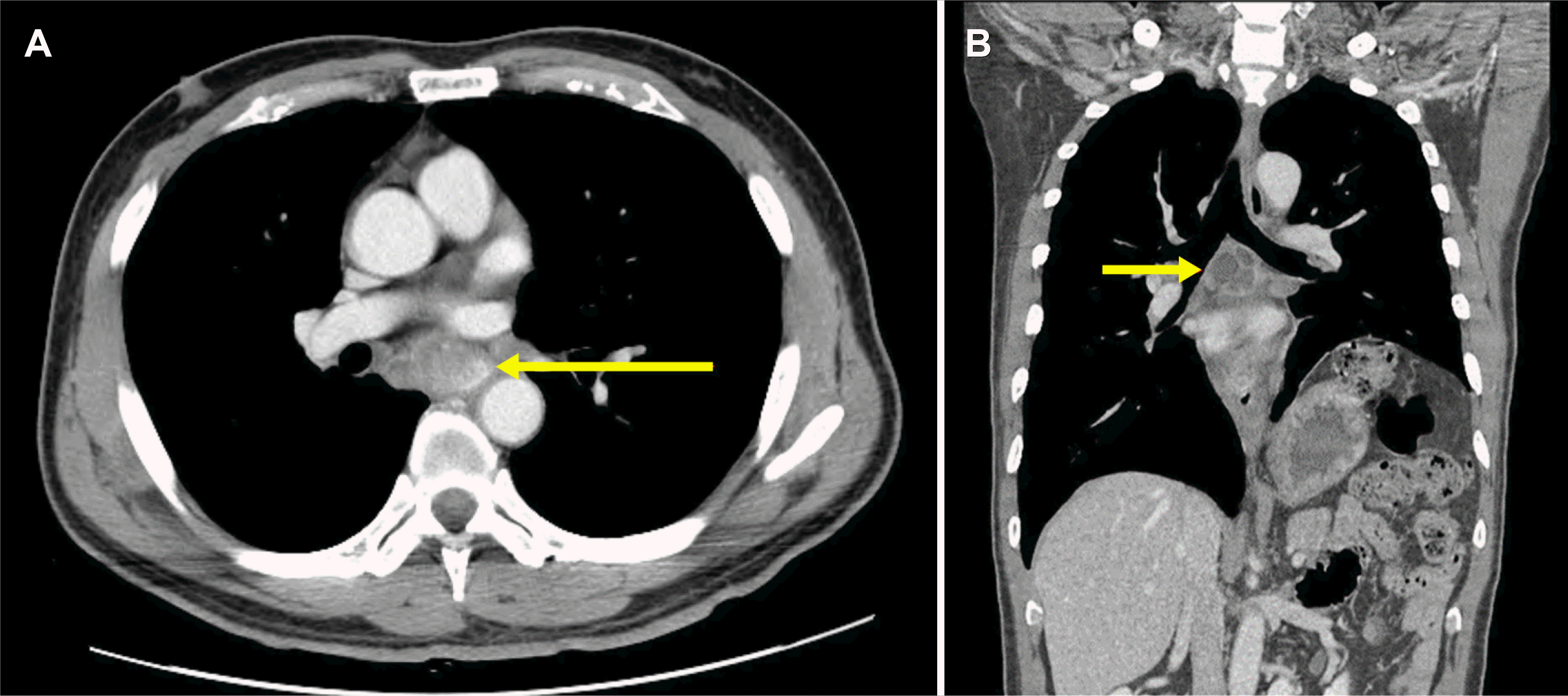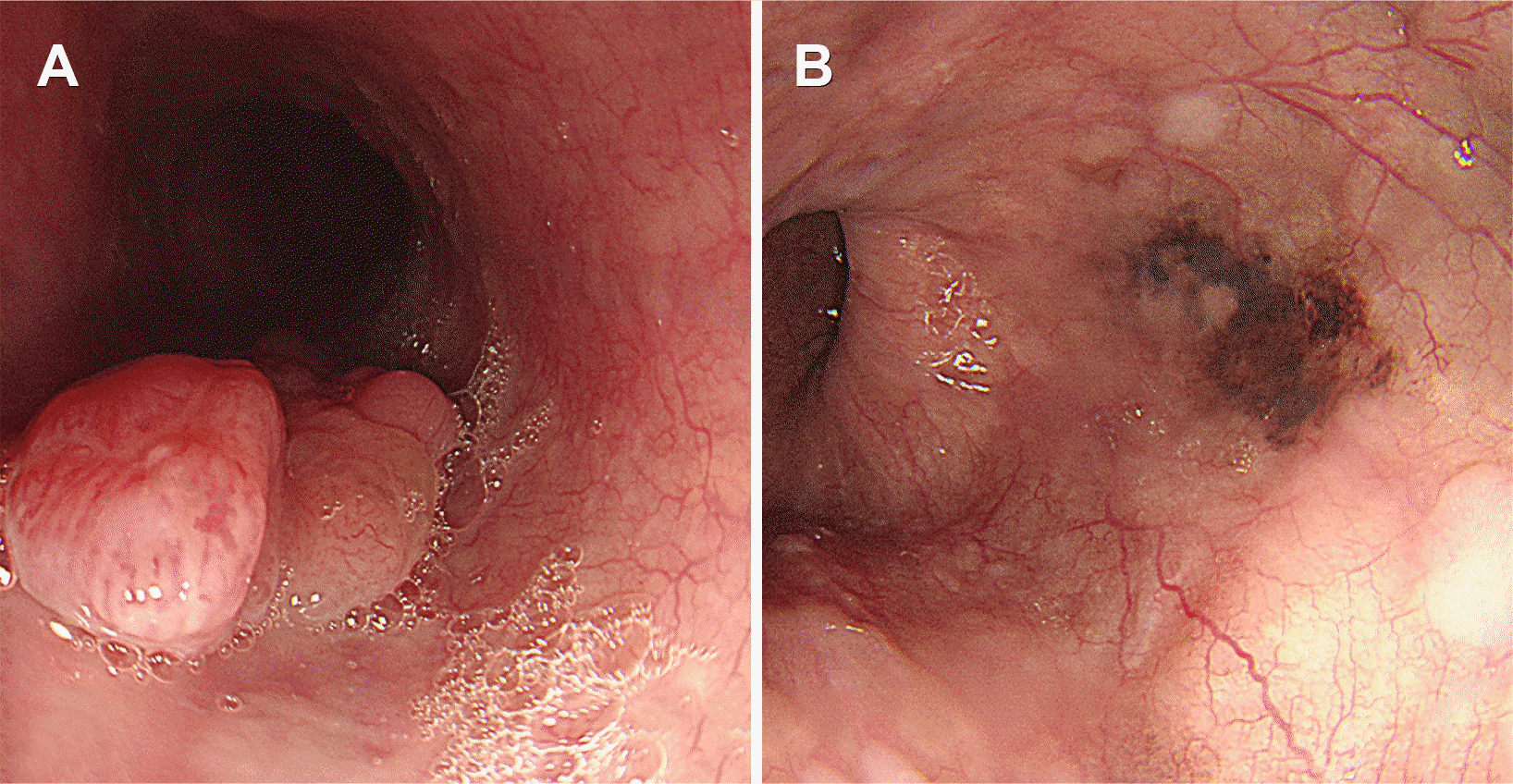1. Iwanuma Y, Tomita N, Amano T, et al. 2012; Current status of primary malignant melanoma of the esophagus: clinical features, pathology, management and prognosis. J Gastroenterol. 47:21–28. DOI:
10.1007/s00535-011-0490-y. PMID:
22048255.

2. Mihajlovic M, Vlajkovic S, Jovanovic P, Stefanovic V. 2012; Primary mucosal melanomas: a comprehensive review. Int J Clin Exp Pathol. 5:739–753. PMID:
23071856. PMCID:
PMC3466987.
3. Zheng J, Mo H, Ma S, Wang Z. 2014; Clinicopathological findings of primary esophageal malignant melanoma: report of six cases and review of literature. Int J Clin Exp Pathol. 7:7230–7235. PMID:
25400820. PMCID:
PMC4230078.
4. Kim YB, Woo JS, Kim CY, et al. 1991; Primary malignant melanoma of the esophagus. Korean J Gastroenterol. 23:971–976. DOI:
10.4166/kjg.2011.57.4.262. PMID:
21519182.

5. Park SJ, Hwang JH, Cho YS, et al. 1997; A operated case of primary melanoma of the esophagus. Korean J Gastrointest Endosc. 17:663–667.
6. Jung BJ, Shin YM, Oh HT, et al. 1997; Esophagus, stomach & intestine; a case of primary malignant melanoma of the esophagus. Korean J Gastrointest Endosc. 17:163–166.
7. Lee SA, Choi YH, Jo WM, et al. 1998; Primary malignant melanoma of the esophagus: 1 cases report. Korean J Thorac Cardiovasc Surg. 31:544–548.
8. Park JK, Lee SH, Kim SH, et al. 1998; Primary malignant melanoma of the esophagus - a case report -. Korean J Thorac Cardiovasc Surg. 31:1106–1109. DOI:
10.12659/AJCR.894041,. PMID:
26212619. PMCID:
PMC4520419.
10. Lee HJ, Choi ST, Eun JR, et al. 2001; A case of pimary malignant melanoma originated from esophageal melanosis. Korean J Med. 61:71–77.
13. Park JS, Choi SJ, Cha CK, et al. 2006; A case of primary malignant melanoma of the esophagus treated by esophagectomy. Korean J Gastrointest Endosc. 33:220–225.
15. Kim SH, Kim JK, Kim JI, et al. 2009; A case of primary malignant melanoma of the esophagus. Korean J Gastrointest Endosc. 38:133–136. DOI:
10.1093/jjco/hyn018. PMID:
30887427.
16. Kang MJ, Yi SY. 2009; Nevus-like appearance of primary malignant melanoma of the esophagus. Gastroenterol Res Pract. 2009:285753. DOI:
10.1155/2009/285753. PMID:
19644559. PMCID:
PMC2716486.

18. Lee J, Kim JY, Bae JY, et al. 2015; Primary malignant melanoma of the esophagus treated by early diagnosis and surgical resection. Korean J Helicobacter Up Gastrointest Res. 15:127–131. DOI:
10.7704/kjhugr.2015.15.2.127.

20. Greene FL, Page DL, Fleming ID, et al. 2002. AJCC cancer staging manual. 6th ed. Springer Science & Business Media, 2002;New York: DOI:
10.1007/978-1-4757-3656-4.




 PDF
PDF Citation
Citation Print
Print







 XML Download
XML Download